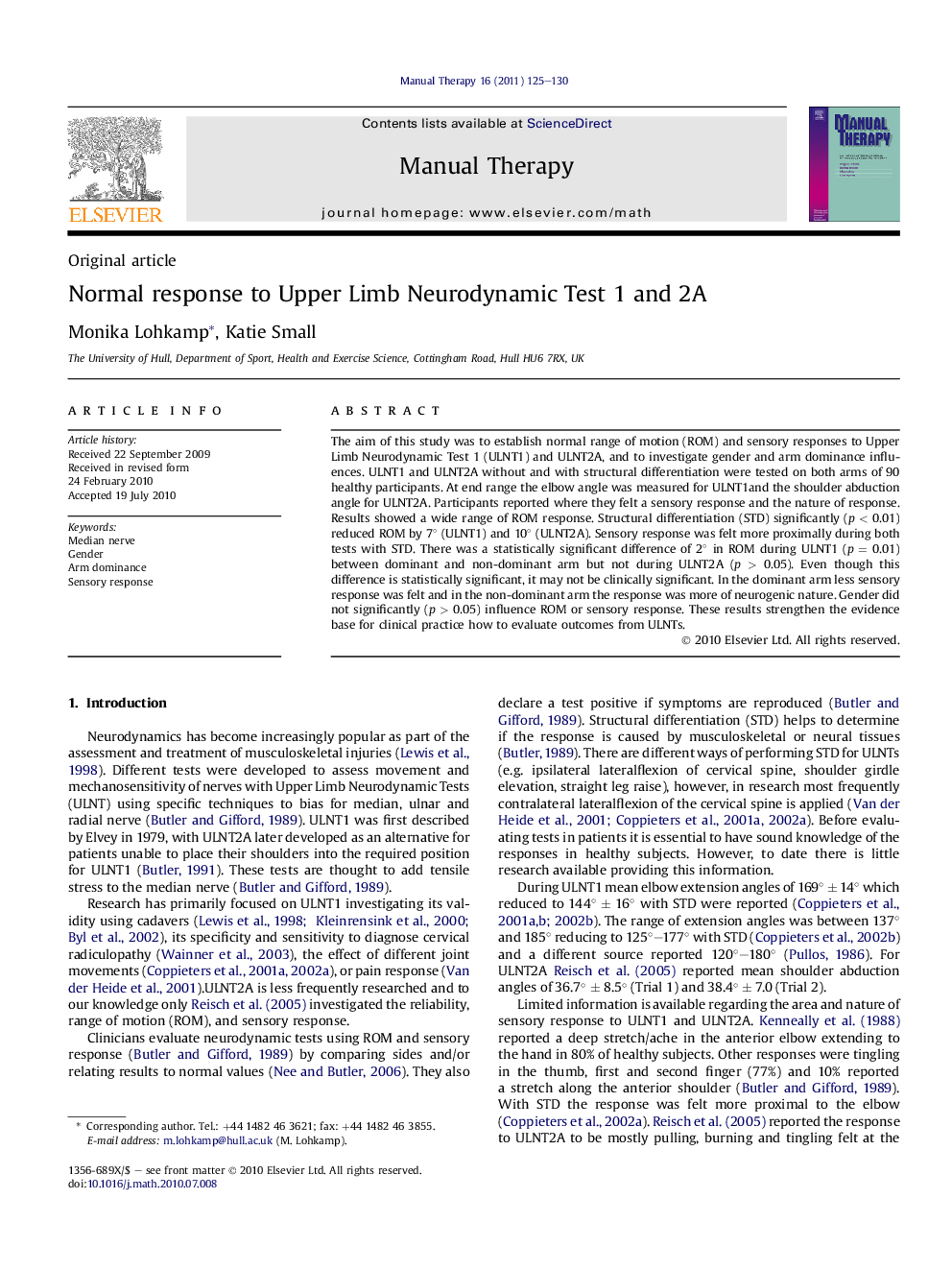| Article ID | Journal | Published Year | Pages | File Type |
|---|---|---|---|---|
| 2625459 | Manual Therapy | 2011 | 6 Pages |
The aim of this study was to establish normal range of motion (ROM) and sensory responses to Upper Limb Neurodynamic Test 1 (ULNT1) and ULNT2A, and to investigate gender and arm dominance influences. ULNT1 and ULNT2A without and with structural differentiation were tested on both arms of 90 healthy participants. At end range the elbow angle was measured for ULNT1and the shoulder abduction angle for ULNT2A. Participants reported where they felt a sensory response and the nature of response. Results showed a wide range of ROM response. Structural differentiation (STD) significantly (p < 0.01) reduced ROM by 7° (ULNT1) and 10° (ULNT2A). Sensory response was felt more proximally during both tests with STD. There was a statistically significant difference of 2° in ROM during ULNT1 (p = 0.01) between dominant and non-dominant arm but not during ULNT2A (p > 0.05). Even though this difference is statistically significant, it may not be clinically significant. In the dominant arm less sensory response was felt and in the non-dominant arm the response was more of neurogenic nature. Gender did not significantly (p > 0.05) influence ROM or sensory response. These results strengthen the evidence base for clinical practice how to evaluate outcomes from ULNTs.
